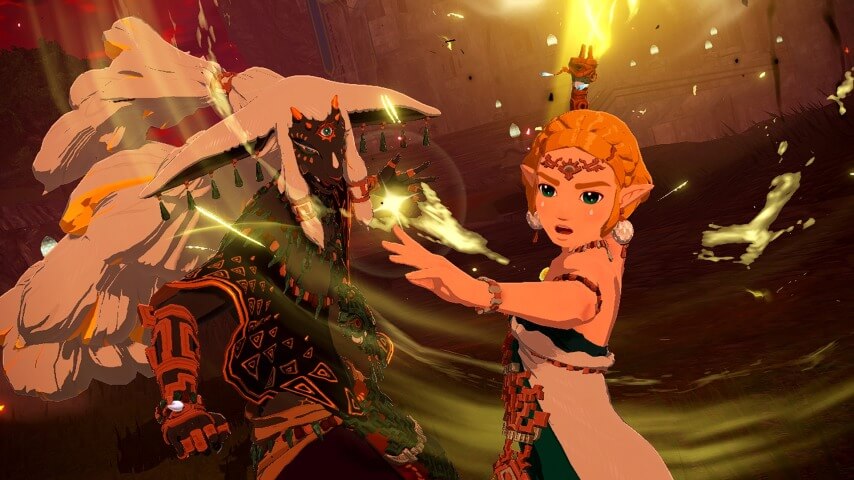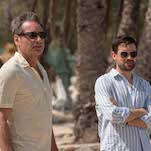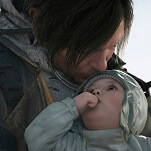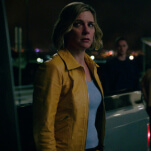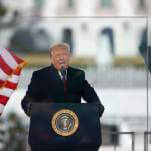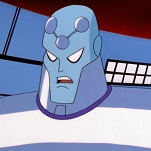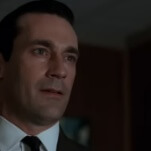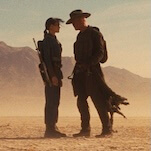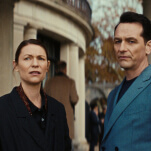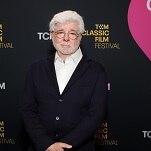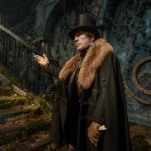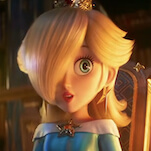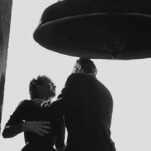And yet, that’s exactly what I’m thinking about this week, courtesy of some time with new Zelda title Hyrule Warriors: Age Of Imprisonment. A sequel to 2020 hack-and-slash game Hyrule Warriors: Age Of Calamity—and an interquel of sorts to main series Zelda game Tears Of The Kingdom, a portion of which it massively fleshes out—the game mostly exists to be pleasantly mindless entertainment, allowing Princess Zelda and her various compatriots to slash their way through thousands of monsters and rogue robots in the style of co-developer Koei-Tecmo’s Dynasty Warriors games. So why, in the name of the franchise’s various triangle-shaped gods, does it have to talk so damn much?
The over-chattiness of Zelda games is nothing new to comment on, of course. The complaint that these games front-load themselves with long-winded narratives, when you’d much rather rather already be out tossing bombs and swinging swords, has been levied against the franchise since at least Ocarina Of Time in 1998, and only got worse in the franchise’s GameCube and Wii periods. (Indeed, one of the many ways that both Tears Of The Kingdom and predecessor Breath Of The Wild were bursts of fresh air was the way they returned a feeling of lonely isolation to Hyrule’s monster-strewn fields.) Which makes it all the more irritating to load up a game whose major selling point is letting you do some big dumb action in one of these lush game worlds, only to have to sit through long cutscenes of plodding dialogue to get there.
It’s not that the storytelling in Age Of Imprisonment is egregiously bad, although I’d be hard-pressed to call it “good.” The game takes place during the flashback portions of Tears Of The Kingdom, showing what happened to Zelda after she fell into a chasm in the game’s (also-too-dang-talk-y, but mercifully brief) opening sequence, blowing that story out to multi-hour length. As it happens, I actually really liked those flashbacks, which were elegantly sketched, and set up one truly shocking in-game twist. But I wasn’t exactly dying to see them slowed down into the spine of a much longer game, one filled with less-memorable characters, and a decidedly unhealthy dose of tepid video game comedy. (If you’ve ever had your stomach drop when hearing a small, feisty character speak in a voice that instantly triggers “Oh god, it’s the fast-talking sidekick to the voiceless and stoic hero” flashbacks, you’re in for a rough time here.) Even if they were brilliantly written and acted, though, I’d still argue that these extended cutscenes don’t belong in Age Of Imprisonment, where they’re superfluous to, and sometimes actively obstructive of, the reason players are actually here. To wit: Putting their Switch 2s through their paces in a colorful and quick-moving Zelda-themed version of Dynasty Warriors combat (sometimes called the “musou” genre, to distinguish it from the one specific series that popularized it) that feeds the simple urge to see thousands of monsters go flying in every single level.
Admittedly, Age Of Imprisonment is less mindless in its play than most games of this ilk: Effort has gone toward giving your various characters—the vast majority of which have been ginned up, semi-generically, from Hyrule’s various species of heroic freedom fighters—unique mechanical identities, and the addition of the Zonai devices that feature so prominently in Tears Of The Kingdom add a ton of variety to your ways to tear through the hordes. (Even if that game’s most ludicrous features, including the ability to generate giant medieval monster trucks that can sweep through enemy camps, have been relegated to special attacks from a specific character.) The combat never actually becomes deep, because this genre neither wants nor requires depth. But it does draw a line between the totally mindless button-mashing of some older Dynasty Warriors games, and one where players actually have to apply a bit of rigor to what they’re doing.
None of which, at the risk of belaboring the point, gels especially well with the game’s extended narrative focus on loss and misery, or the sheer amount of real estate it gives over to having its characters slowly talk out their feelings. (And, yes, before you ask, I could just go full anti-narrative and start skipping cutscenes outright, but I try to apply an “if it’s on the plate, it gets judged” approach to talking about what a video game chooses to show me.) It’s clear that people at Nintendo chose to take this story seriously, to give it the weight and narrative heft that they felt it deserved, rather than just tossing out a quick filler narrative to justify slicing up a billion Bokoblins. Except that, sometimes, a quick filler narrative is not just easier on players’ brains, but more artistically in line with the play that you’ve also worked very hard to create; there’s a bizarre juxtaposition between how breezy Age Of Imprisonment feels in the hands, as you tap-a-tap-a-tap-a your way through the population of a small, goblin-filled city every few minutes, and the dour way it conducts itself while in story mode. Nintendo, which has made some of the most joyful-to-play video games of all time, married to some of the medium’s most mid stories, has struggled with this truth for decades at this point: Sometimes you don’t need to be deep. Sometimes being ridiculously fun to play can simply be enough.
